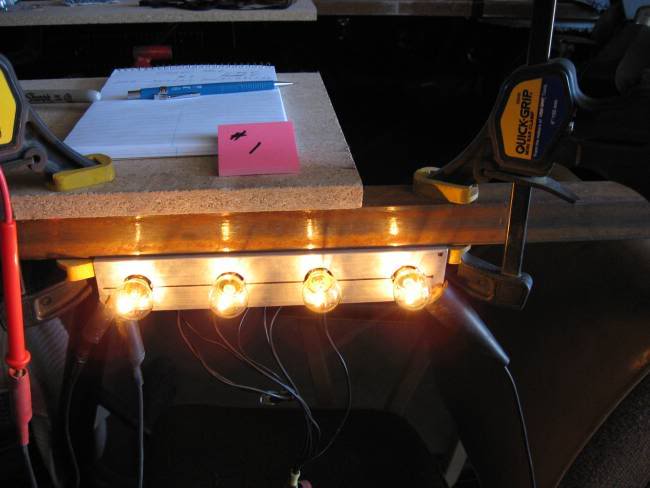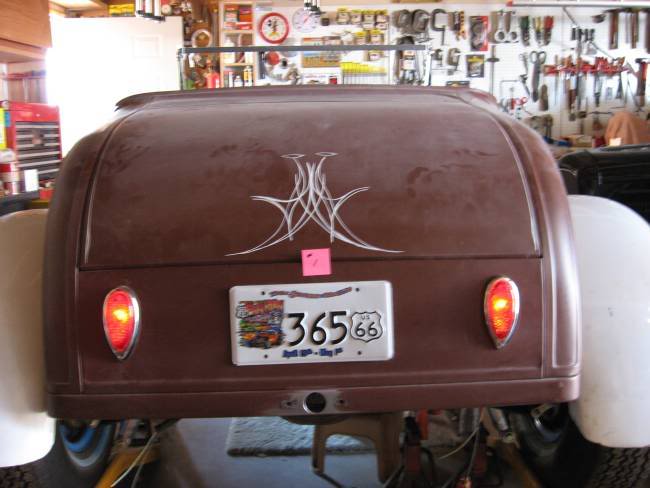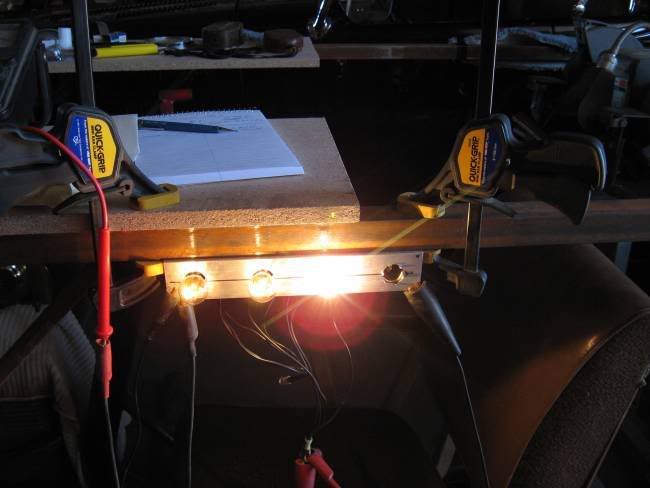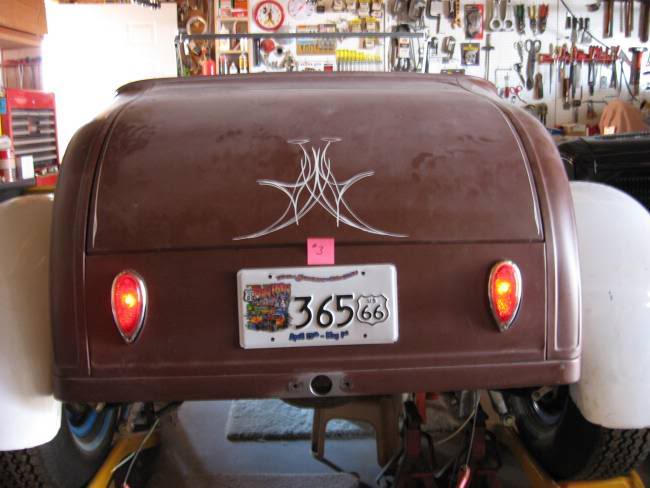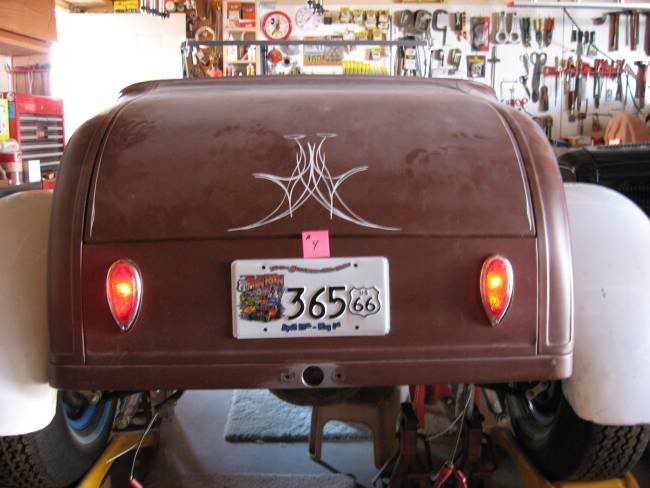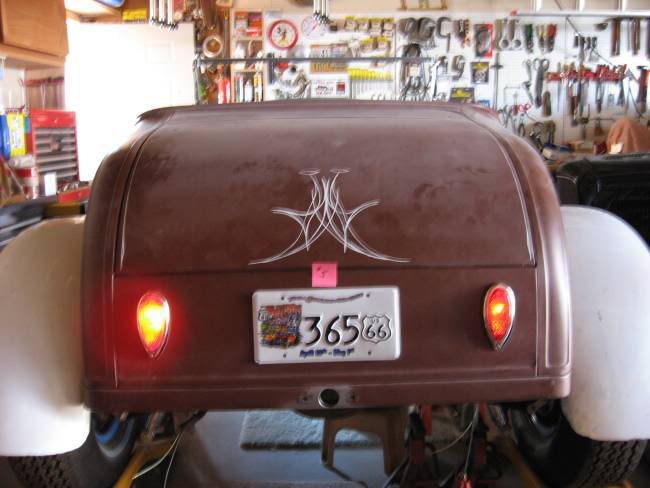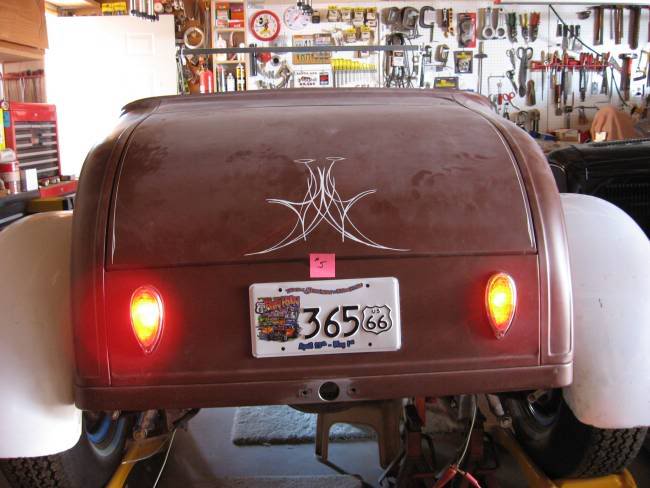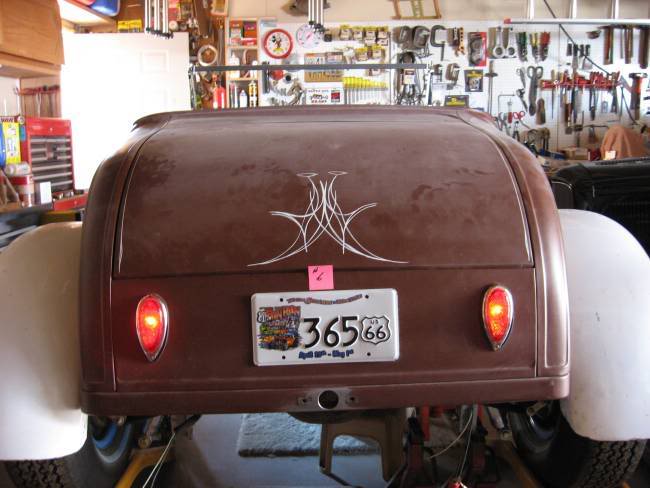If you have a good tip, share it with all of us. It will be appreciated.
TAIL LIGHT TECH
H.A.M.B
This discussion is from "The Hokey Ass Message Board" started by C9, Jun 8, 2007.
by C9
Member Emeritus
from Kingman, Arizona - The place on the way to other places
~~~~~~~~~~~~~~~~~~~~~~~~~~~~~~~~~~~~~~~~~~~~~~
Here’s something that may be of interest to those of you who run early cars with early taillights. A pair of 39's in this case.
What you’ll see is some direct comparisons to the old faithful #1157 bulb as well as candlepower listed for each bulb tested.
I probably should have taken some amp readings, but Candlepower (CP) will tell you pretty much the same thing.
All incandescent non-Halogen light bulbs were purchased at WalMart.
Which means you can get them at most places that sell auto oriented bulbs.
All CP readings were taken from 5" away in an attempt to preclude ambient light from having an affect.
All CP readings were on the taillight circuit.
CP was read directly from the bulb with the red lense removed.
Voltage for the lights was sourced from my pickup parked nearby.
It’s a 2002 Ford F150 SuperCrew and has a large capacity battery.
Along with that, the taillights on the 31 were fed with 8' of 14 gage wire which comes close to approximating the typical taillight wire length and size in most hot rods.
Voltages noted with each photo pair were taken with a digital voltmeter connected to where the taillight wiring was connected to the source wiring.
An 8' long single 14 gage ground wire was run and connected to the right side taillight body.
As is obvious, the taillights and stoplights would have been 5% - 8% brighter if the engine was running, but voltages with the engine off were fairly close so test indications compare favorably with one another.
Before we get too far along, a comment on what some vendors call "Bright Bulbs."
It would be interesting to see what these actually are, but in my opinion they’re nothing more than a bulb designed and manufactured to reach it’s rated maximum brilliance at a lower voltage than the usual auto combo taillight/stoplight bulb.
Bulbs that fit a particular socket or receptacle are manufactured in many different voltage ratings.
The garage - where the pics were taken - has all lights off and it’s somewhat dim in there.
In other words, not quite as bright as shown in the pics due to the camera tries to make up for the lack of light.
The camera - a small digi-cam by Canon, Model #A540 - had the flash turned off for all pics.
As you can see above, the Halogen bulb throws a lot of light.
Seen in the pic and also seen in CP readings . . . more on that in a bit. The photos will be self-explanatory to an extent.
Additional things listed will be bulb type, CP (CandlePower) and voltage.
Keep in mind the left taillight will be the one with differing bulbs.
The right taillight will run a standard #1157 bulb.
The left photo will be taillights and the right photo will show the stoplights.
This first pic in the series has a P21-5W bulb installed.
Voltage = 11.94
CP = 10
Photo pair #2, 2357LL bulb installed.
Voltage = 12.34
CP = 9
Photo pair #3, 2057 bulb installed.
Voltage = 12.26
CP = 5
Photo pair #4, 1157LL bulb installed.
Voltage = 12.24
CP = 6
Photo pair #5, Halogen bulb installed.
Voltage = 12.02
CP = 70 - not a misprint, 70 is the CP.
Photo pair #6, 1157 bulb installed, a match both brand-wise and age-wise to the 1157 bulb in the right side taillight.
Voltage = 12.27V
CP = 9
This first photo shows four of the lights we’ll be testing.
Set up in a home-made fixture.
I thought we’d get some good comparisons here, but in the pic all the bulbs look about the same.
Bulbs on the taillight circuit.
(left to right) 1157, 1157LL, 2057 & 2357LL
I believe the LL stands for Long Life.
Photo #2 showing three bulbs - also on the taillight circuit are (left to right) 1157, P21-5 watt and a 5 watt Halogen.
The Halogen bulb available at Bob Drake re-pro parts.
It’s a well made unit and will stand a bit of handling compared to some of the fragile looking Double Halogen bulbs on one base.
Like always, if you want the Halogen bulbs to last, don’t touch them with your bare fingers.
Latex gloves seem to work well and the original pair of Bob Drake Halogens I had in the 32 lasted 3-4 years before one of them failed.
I learned a few things about light bulbs during this little investigation.
Some bulbs do better than others, but the Halogen bulb is the hands down winner.
I understand the Halogen bulb pulls 5 amps and the standard 1157 pulls 1 amp on the taillight circuit.
Fuse your system accordingly.
Use adequate size wiring as well, 14 gage should do it for most of us.
One thing I think would help extend the life of the Halogen bulbs would be to vent the taillight housing.
Early car housings are quite small compared to the large taillight housings found on modern cars and heat doesnt dissipate as fast as it should.
To that end some kind of filtered air exchange device would help to extend the life of the Halogen bulbs.
Filtered to keep dust out of the housing.
If dust is allowed in, the taillights light output will be diminished.
Lots of ways to do it so Ill leave that part to your imagination.


